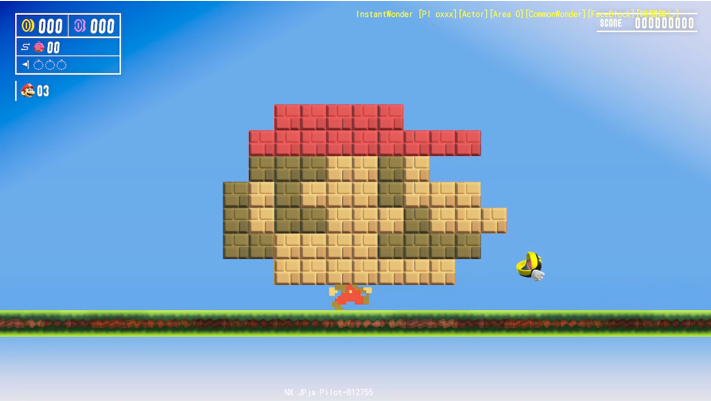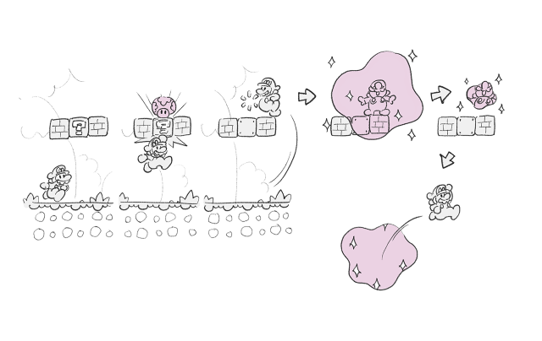
In a game industry that seems to engage in periodic layoffs as a matter of course, it's often hard for even popular game franchises to maintain continuity in their underlying creative teams from sequel to sequel. Then there's the Mario series, where every person credited with the creation of the original Super Mario Bros. in the 1980s ended up having a role in the making of Super Mario Bros. Wonder just last year.
In a recent interview with Ars Technica, Wonder producer Takashi Tezuka said it wasn't that tough to get that kind of creative continuity at Nintendo. "The secret to having a long-tenured staff is that people don't quit," he said. "For folks who have been there together for such a long time, it's easy for us to talk to each other."
That said, Tezuka added that just getting a bunch of industry veterans together to make a game runs the risk of not "keeping up with the times. Really, for me, I have a great interest in how our newer staff members play, what they play, what they think, and what is appealing to them. I think it's very interesting the things we can come up with when these two disparate groups influence each other to create something."
Young and old
For Super Mario Bros. Wonder, the development team solicited literally thousands of ideas for potential game-changing Wonder Effects and badges from across Nintendo. In doing so, the game was able to incorporate the viewpoints of people with a wide variety of histories and memories of the series, Tezuka told Ars.
- Super Mario Bros. Wonder Producer Takashi Tezuka.Nintendo
- Super Mario Bros. Wonder Director Shiro Mouri.Nintendo
"Among our staff, there are folks who actually maybe haven't played some of the [older] game titles we're talking about," he said. "So I think there was some familiarization for those folks with some of those titles. And maybe there was some inspiration drawn from those titles that I'm not aware of."
AdvertisementFor a series as long-running as Mario, though, even some of the relatively "younger" development cohort can have a deep history with the series. Super Mario Bros. Wonder Director Shiro Mouri, who joined Nintendo in 1997, recalled playing the original Super Mario Bros. back in elementary school, and being "so moved and awed by the secrets and mysteries I discovered in that game." The Wonder Effects in Wonder were an explicit attempt to recapture that feeling of being young and discovering new things for the first time, which can be difficult in such an established series.
Mouri also drew some parallels between Yoshi's Island—where Yoshi could sometimes turn into a vehicle—and Wonder transformation effects that could turn the player into slime or a spiky ball, for instance. "That's not to say that we drew [direct] inspiration from [Yoshi's Island] or anything, but I think... providing surprises has always been a theme throughout our philosophy," he said.
Finding a balance
Despite the Mario series' association with childlike wonder, Tezuka told Ars that "we don't really think of the player's age when we're creating. I think the result is that we have a lot of games that are approachable, accessible, playable by younger children. But that's not the end goal when we start developing."
Balancing the difficulty for young players and veterans alike can be one of the toughest parts of designing a Mario game. "I think it's really quite difficult to create within one course elements that satisfy both new players and veteran players," Tezuka said. And for Wonder, the badge system served as something of a "choose your own difficulty" modifier to some extent. "The jet runner badge [which Makes Mario dash forward at high speed at all times], that is probably for more experienced players," Mouri said, "where we have a badge where if you fall into a hole you are revived, I think that one is pretty beginner friendly."

Tezuka said the Wonder development team would always "keep in mind ways in which we can allow players of different ability levels to play together in the same area." Those included making Yoshi immune to enemy damage or online systems where you can get assistance from friends or strangers.
AdvertisementMouri also pointed to the ability to pick from a number of courses on the Wonder world map rather than having to play every level in sequential order. That decision means that "more expert players can choose to play that harder course if they want and for more beginner players, they can skip [that course] entirely and still progress in the game."
Integrating that kind of freedom was important, Tezuka said, because "we have some of our younger staff who don't consider themselves good at action games. But they do want to see what's next." At the same time, Tezuka guessed that those younger players might be reluctant to use a "cheat mode" just to get to future levels.
"Myself, however, if there was something like that [cheat mode], I would give it a try," he said.



















